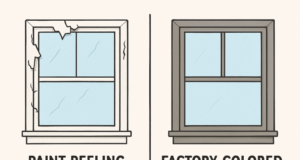Smart Mountain Living: Utah Home Designs That Blend Comfort and Style
Utah’s high-desert terrain, with its mix of mountains, plateaus, and valleys, shapes how homes settle into the landscape. Wild temperature swings and sun exposure shift with each season. On a clear morning, sunlight sweeps over a valley rim, painting shadows along the slopes and filling large windows with changing light. In these places, thoughtful home design means more than shelter—it’s about adapting rooms, eaves, and decks to fit both panorama and climate. Utah homes often stand where snow meets sandstone, so floor plans, window orientation, and outdoor spaces balance year-round comfort with stunning views.
Embracing Mountain Living with Utah-Style Floor Plans
Mountain sites often come with sloping lots and eye-catching vistas. Stepped levels and split-entry layouts help homes blend with uneven ground instead of fighting against it. Walk-out basements stretch living space to the lower slope, giving easy outdoor access. Tiered decks follow the hillside, adding outdoor seating without heavy grading. Vaulted ceilings in main rooms lift sight lines to the peaks.
One concept home perches next to a small canyon, using a split-entry foyer and connected terrace to join separate levels. Another design runs parallel to a ridgeline, stacking a garage beneath a sunroom, so every room faces the valley. These approaches use the land’s shape for privacy, daylight, and movement without losing style.
Maximizing Natural Light in High-Desert Designs
Bright sunshine defines Utah’s high-desert days. Sun-path analysis helps place windows where gentle morning light pours into living areas, while shaded overhangs block harsh midday rays. Strategic window groupings face south or southeast to boost passive warmth in winter and natural lighting year-round.
Homes often include clerestory windows—those high, narrow panes near the roofline—to let in sunlight without sacrificing privacy. Open to the sky above, atrium spaces become sheltered garden rooms or bright foyers.
Glare control matters as much as energy savings. Use wide eaves, light-filtering glass, or window films to soften intense afternoon light, so rooms stay bright and comfortable without overheating.
Open-Plan Concepts Rooted in Utah Aesthetic
Large, open layouts fit Utah’s scenic settings and encourage gathering. Great-room designs combine kitchen, dining, and living spaces under vaulted or beamed ceilings, so no view is missed. Wide sliding doors or folding walls connect interiors with patios for seamless indoor-outdoor living.
Successful zoning uses furniture arrangements and area rugs to mark food prep, eating, and relaxing zones—no partitions needed. Durable flooring materials, such as engineered wood or tile, withstand snowy boots and mountain dirt. Natural stone accents and low-sheen finishes reflect the colors seen through grand windows, weaving the outside into daily life.
Tackling Climate Challenges with Energy-Efficient Layouts
Climate needs shape floor-plan orientation. Most homes turn main living areas toward the south for winter sun, while bedrooms on the north wall stay cooler in summer. Placing high-thermal-mass materials like concrete floors or brick walls near sunny windows stores daytime heat and releases it overnight.
Compact building shapes—think square or rectangular footprints—minimize wall exposure, cutting both heat loss and gain.
Here’s a quick comparison:
| Layout Feature | Winter Benefit | Summer Benefit |
| South-Facing Rooms | Warmer Interiors | Controlled Cooling |
| Compact Shape | Less Heat Loss | Less Heat Gain |
| Thick Insulation | Blocks Cold Drafts | Reduces Overheating |
Solid insulation fills wall and attic gaps, while modern HVAC systems distribute warmth or cooling where needed, matching each season’s challenge.
Accessing Premier Floor Plan Libraries
High-quality pre-designed layouts save time and help match homes to dramatic sites. The Utah house plans catalog offers a wide selection, from rustic cabins to modern chalets. Search filters let users sort by the number of bedrooms, square footage, or preferred architectural style, making it simple to find suitable matches.
Many plan libraries include detailed previews and optional upgrades, so buyers can see how options adapt to their needs. This flexibility bridges the gap between ready-made ease and custom adaptation.
Customizing Blueprints to Your Property’s Unique Characteristics
Every property has quirks: steeper slopes, irregular lot lines, or prime views in one direction. Customizing blueprints helps fit the plan to the site. Consider adjusting ceiling heights for prized vistas or adding flex rooms that work as guest bedrooms, hobby nooks, or home offices. Bonus spaces, like mudrooms or storage lofts, adapt daily living for mountain life.
Work with architects or use 3D modeling tools to preview how changes will look. Pay close attention to site setbacks, driveway grading, and convenient access—these practical elements ensure your home sits comfortably on the land.
From Concept to Key Turn: Finalizing Your Dream Home
Turning designs into reality takes clear steps. Start by refining your floor plan to match lifestyle and climate needs. Line up financing early, then select local builders experienced with Utah’s unique conditions. Stay in close touch with professionals, setting realistic timelines for each milestone.
Your mountain home should fit the land and your vision. Move forward knowing that every detail will bring you closer to sunrise views and year-round comfort.









